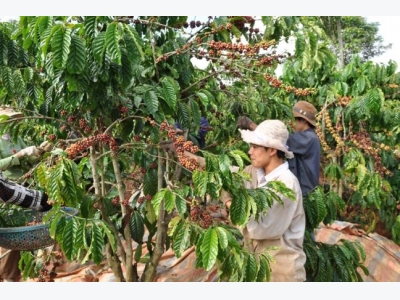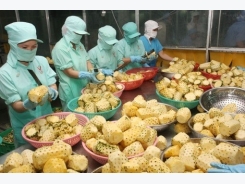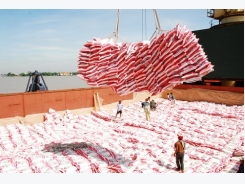Coffee needs climate change adaptation

Climate change is becoming more serious and has adverse impacts on coffee planting, reducing yields. Building a sustainable model of coffee production that can adapt to climate change is of great necessity.
Coffee production should be concentrated in planned areas
According to Le Van Duc, Deputy Director of the Ministry of Agriculture and Rural Development’s Department of Crop Production, coffee area and yields have increased strongly. In recent years, however, El Nino spells have adversely affected coffee production in the Central Highlands.
Last year, total area of coffee plantations in the Central Highlands was 577,786ha, of which 116,403ha were affected by droughts, and 6,854ha were a total loss. This year, the rainy season came early, making 15-20 percent of coffee flowers bloom out of season with 50-70 percent giving no fruit.
In the opinion of experts, sharing experiences in planting coffee and proposing measures to cope with climate change is of great necessity. Dr. Truong Hong, Acting Director of the Western Highlands Agro-Forestry Scientific and Technical Institute, said when the percentage of early blooming coffee flowers exceeds 10 percent, coffee plants will need to be provided with a reasonable amount of water at once to facilitate the generation of flower buds during the dry season. If the percentage of early blooming coffee flowers is less than 10 percent, it will be unnecessary to water coffee plants.
Dr. Tran Van Khoi, Acting Director of the National Agriculture Extension Center, said climate change has had growing adverse impacts on agricultural production in the Central Highlands. Unfavorable weather conditions have facilitated the growth of insects, leading to a decline in coffee quality and yield, and increasing production costs. In this context, apart from urgent measures to protect coffee plantations against the adverse impacts of climate change in 2017, in the long term, coffee production must be concentrated in planned areas, he said. Farmers should not plant coffee in areas where the soil condition is not suitable and water resources are insufficient. Coffee grown in unplanned areas should be replaced with other plants, according to Khoi.
The re-planting of coffee should follow the plan of the Ministry of Agriculture and Rural Development. Economical watering is necessary to adapt coffee production to climate change.
In 2016, with more than 640,000ha of coffee grown in 105 districts of 22 provinces, Vietnam exported nearly 1.8 million tonnes of coffee beans, earning more than US$3.36 billion. About 84 percent of total coffee growing area nationwide, 540,000ha, is concentrated in the Central Highlands provinces of Gia Lai, Kon Tum, Dak Lak, Dak Nong and Lam Dong.
Related news
Tools

Phối trộn thức ăn chăn nuôi

Pha dung dịch thủy canh

Định mức cho tôm ăn

Phối trộn phân bón NPK

Xác định tỷ lệ tôm sống

Chuyển đổi đơn vị phân bón

Xác định công suất sục khí

Chuyển đổi đơn vị tôm

Tính diện tích nhà kính

Tính thể tích ao




 Việt Nam negotiates with China to export pork
Việt Nam negotiates with China to export pork  Vietnam rice exporters face challenges
Vietnam rice exporters face challenges